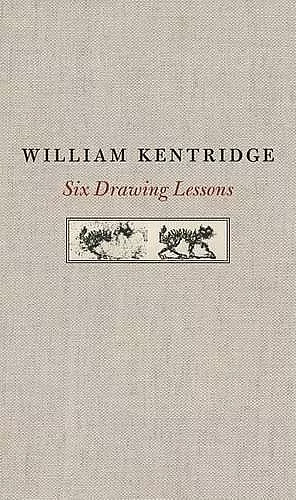Six Drawing Lessons
Format:Hardback
Publisher:Harvard University Press
Published:1st Sep '14
Should be back in stock very soon

Over the last three decades, the visual artist William Kentridge has garnered international acclaim for his work across media including drawing, film, sculpture, printmaking, and theater. Rendered in stark contrasts of black and white, his images reflect his native South Africa and, like endlessly suggestive shadows, point to something more elemental as well. Based on the 2012 Charles Eliot Norton Lectures, Six Drawing Lessons is the most comprehensive collection available of Kentridge’s thoughts on art, art-making, and the studio.
Art, Kentridge says, is its own form of knowledge. It does not simply supplement the real world, and it cannot be purely understood in the rational terms of traditional academic disciplines. The studio is the crucial location for the creation of meaning: the place where linear thinking is abandoned and the material processes of the eye, the hand, the charcoal and paper become themselves the guides of creativity. Drawing has the potential to educate us about the most complex issues of our time. This is the real meaning of “drawing lessons.”
Incorporating elements of graphic design and ranging freely from discussions of Plato’s cave to the Enlightenment’s role in colonial oppression to the depiction of animals in art, Six Drawing Lessons is an illustration in print of its own thesis of how art creates knowledge. Foregrounding the very processes by which we see, Kentridge makes us more aware of the mechanisms—and deceptions—through which we construct meaning in the world.
[This] is an enlightening, circuitous, and self-reflexive performance that delves into [Kentridge’s] greatest obsessions in the realms of art, politics, history, and image-making… Kentridge discusses topics including Plato’s cave allegory (a subject that looms over much, if not all, of the book), Africa’s colonies, and the violence of the Enlightenment. He delivers sharp insights into the history and character of Johannesburg; his memories from growing up under apartheid provide some of the book’s most lucid moments. He also elaborates upon life in the art studio (a ‘safe space for stupidity’)… Time—including how it affects work in the studio—and memory are also major themes. The argument here is really an anti-argument; Kentridge emphasizes the need to occupy the gap between certainty and uncertainty, and stresses ‘being aware of the limits of seeing,’ and ‘our own limits of understanding, the limits of our memory, but prodding the memory nonetheless.’… This is an essential book for anybody seeking a better understanding of Kentridge’s work. * Publishers Weekly *
Anyone who has seen the film animations of the great South African artist will be fascinated by the account he gives of his thinking and studio practice. -- Kenneth Baker * San Francisco Chronicle *
This is a beautiful and necessary book in all respects… It looks at the work of an artist from his own perspective, which in some instances may be a risky strategy, but Kentridge is such a good writer that the book is as brisk as it is insightful… He is also a wonderful draftsman, and his drawings, often executed in pen and ink or cut paper, are carefully reproduced here. The production of this book was handled as a work of art too. The size, proportion, binding, and attention to detail are superb. The design by Dean Bornstein harmonizes perfectly with the tone of the book. Enthusiastically recommended. -- S. Skaggs * Choice *
ISBN: 9780674365803
Dimensions: 235mm x 140mm x 22mm
Weight: 499g
208 pages